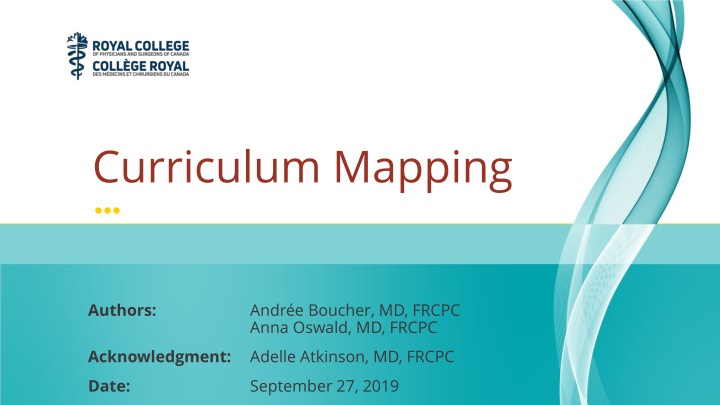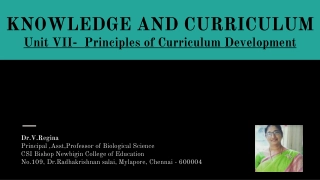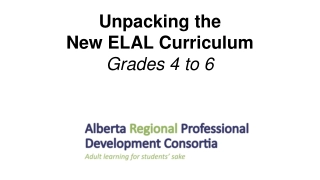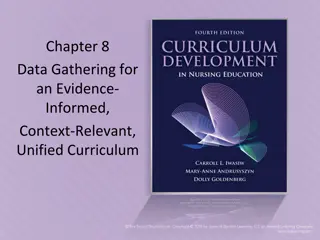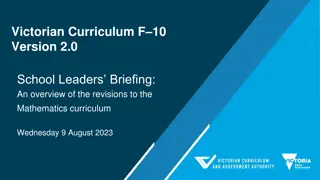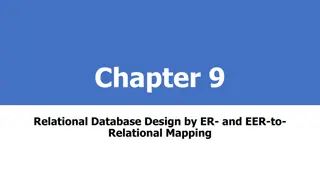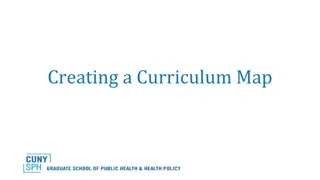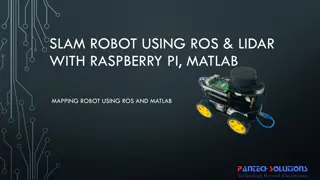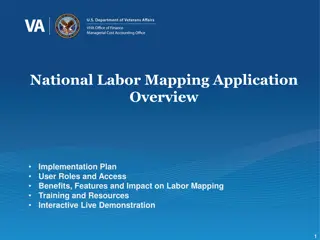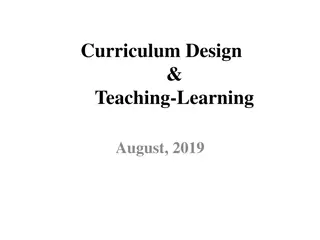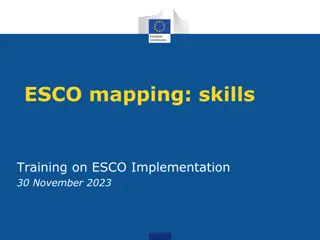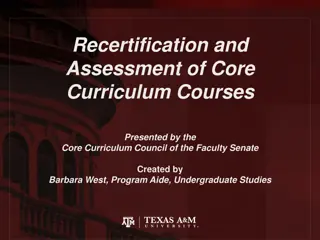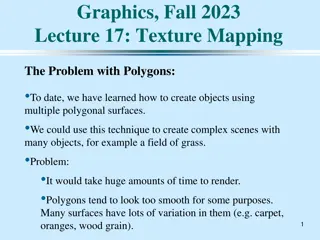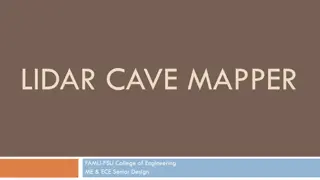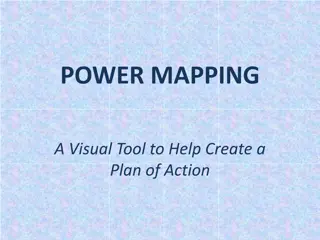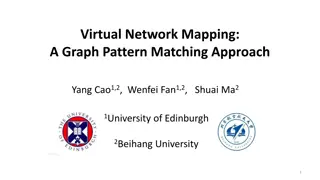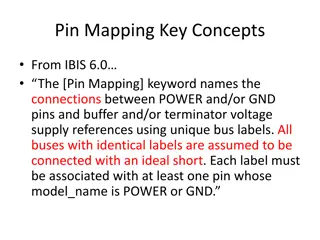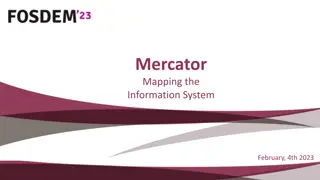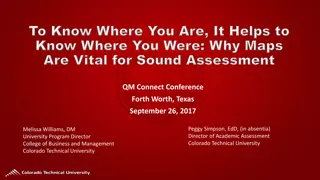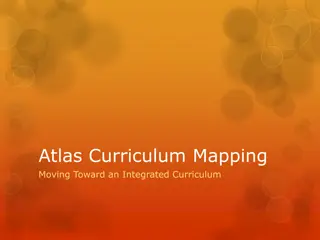Curriculum Mapping
Curriculum mapping is a crucial tool that guides learners, educators, and managers through the curriculum elements, highlighting the logical progression of learning activities along CBD stages. It serves to align competencies with educational strategies, link assessments to training experiences, and provide transparency in educational journeys. This overview explores the significance of curriculum mapping in enhancing educational programs.
Download Presentation

Please find below an Image/Link to download the presentation.
The content on the website is provided AS IS for your information and personal use only. It may not be sold, licensed, or shared on other websites without obtaining consent from the author.If you encounter any issues during the download, it is possible that the publisher has removed the file from their server.
You are allowed to download the files provided on this website for personal or commercial use, subject to the condition that they are used lawfully. All files are the property of their respective owners.
The content on the website is provided AS IS for your information and personal use only. It may not be sold, licensed, or shared on other websites without obtaining consent from the author.
E N D
Presentation Transcript
Curriculum Mapping Authors: Andr e Boucher, MD, FRCPC Anna Oswald, MD, FRCPC Adelle Atkinson, MD, FRCPC September 27, 2019 Acknowledgment: Date:
Objectives Upon completion, participants will be able to: Describe the purposes of a curriculum map Create a draft curriculum map Detect and avoid common pitfalls in curriculum mapping 2
Outline Overview of Curriculum Mapping What and Why 10 practical key steps for curriculum mapping Drafting a sample map Pitfalls in curriculum mapping 3
Measuring Progression An Entrustable Professional Activity (EPA) is a task of the discipline that can be delegated to a resident and observed by a supervisor. In order to advance from one stage to the next, the resident must be able to perform all the EPAs of a specific stage of CBD. 4
EPAs specific to each stage of CBD and tools for measuring progression from one stage to the next Assessment continuum Training continuum EPAs EPAs EPAs
What is curriculum mapping? A planning and communication tool that can be thought of as a road map to the curriculum. It guides learners, educators and managers through the elements of the curriculum and indicates how these elements are related. It is an accreditation requirement Curriculum maps should be flexible and allow changes to suit required adjustments according to the education context 6
What purpose does curriculum mapping serve? It plans learning activities along CBD stages in a logical sequence of progression (i.e., the CBD Competence Continuum) It links each competence to educational strategies It aligns EPAs and other assessments activities to your program's training experiences It renders transparent, for learners, teachers, appraisers and administrators, the learner s educational journey It highlights what is working well (e.g., a specific activity is at the right stage) , as well as identify gaps in your curriculum 7
10 steps for curriculum mapping 1. Assemble a dynamic team 2. Review/develop your program s mission and/or goals 3. Review your existing curriculum 4. Map the EPAs 5. Review your rotations 6. Distribute the EPAs (and assessment tools) across the stages of the program 7. Ensure logical progression of learning while incorporating formal observation/feedback opportunities 8. Ensure your program complies with accreditation standards 9. Prepare to launch the new curriculum 10. Evaluate your program regularly with the goal of continuous improvement 8
1. Assemble a dynamic team Recruit individuals who are passionate and committed, and consider: Members of the program committee Clinician educators Resident representatives An expert in Competence by Design Program Administrator Once you have assembled your team: plan a series of closely spaced meetings, and introduce them to the Royal College CBD resource directory 9
2. Review/develop your programs mission and/or goals Developing EPAs, milestones and required training experiences is done by the Specialty Committee. Review these and any other additional program goals and experiences. Identify any obvious gaps. Review the Pathways document and CanMEDS Framework to identify potential missing elements of intrinsic competencies. 10
3. Review your existing curriculum Seeing how the different parts of your existing program fit together is an important step; don t skip this one! If you don t have a map of your pre-CBD curriculum, create an inventory and spreadsheet so you can visualize your curriculum in one place. 11
Worksheet activity Review the first 3 steps on the worksheet and jot down some initial notes about: Who do you need on your team? What are your program s goals/priorities? What experiences and assessments exist? 12
4. Map the EPAs You already listed your current core rotations together with the key training experiences. You have a list of EPAs from your Specialty Committee Link your EPAs and required training experiences to your existing training experiences/rotation. Not all training experiences will be mapped to an EPA this is ok! 14
5. Review your rotations Are there any gaps? Are there EPAS or other assessments tools which are not preceded/matched by learning activities? If there are current training experiences that do not map to particular EPAs, do they serve other learning needs? Are there training experiences that are no longer required? If so, what will be the impact of removing this training experience? On learning? On service? You may need to work with your program committee to create new teaching, learning and assessment opportunities. 15
6. Distribute the EPAs (and other assessment tools) across the program Ensure that it is possible for your residents to achieve an EPA during the rotation. (i.e., not possible to achieve a surgical EPA in an ambulatory medical rotation) Ensure that the EPAs are distributed evenly so that certain core rotations don t end up with many more than other rotations. Ensure that you indicate which rotation is responsible for the EPA if it can be mapped to several rotations. (e.g., required or optional Organize the EPAs in different contexts in order to clearly see which may be prerequisites of others and compare to your current curriculum. 16
Use EPAs in various contexts within a specific stage of CBD EPA - Core of discipline Context: Pre-admission Context: simulation laboratory Context: outpatient clinic EPA Preop assessment of a diabetic patient before cardiac surgery Hyperthyroid patient with atrial fibrillation Assessing a clinical situation Need for chemotherapy Introducing a antidiabetic drug (benefits/risks) Discussing a treatment plan Inform a diabetic patient of the need for dialysis Need for insulin therapy Need for chemotherapy Informing the patient of a difficult situation Place a central vein catheter for antibiotics Do technical procedure as relevant
7. Ensure logical progression of learning while incorporating formal observation/feedback opportunities After the adjustments ensure that the EPAs continue to follow a logical progression of learning and comply with accreditation standards. For example have you ensured there are opportunities to complete less complex EPAs before more complex related EPAs? Remember all EPAs at a stage of training should be achieved before a resident is able to progress to the next stage of training. Work to increase the number of shorter targeted observations, in order to provide repetitive effective feedback and coaching. 18
CBD Competence Continuum Visualize the Competence Continuum when distributing your EPAs across the stages of training
Anesthesia Curriculum Map Sample: draft assessment plan Related Subspecialty (ifapplicable) Additional Anesthesiology Assessments NOSM Royal College AssessmentPlan Identifier Entrustable ProfessionalActivity Short Name Performing preoperative assessments for ASA 1 or 2 patients who will be undergoing a minor scheduled surgicalprocedure Pre-Operative Assessment Micro CEX: Pre-Op Assessment (3 of 6); RLB Form 1 1.1 Preparing the operating room (OR) for minor scheduled surgical procedures for ASA 1 or 2patients OR Preparation Form 1 OSCE: MachineCheck 1.2 Monitoring ASA 1 or 2 adult patients undergoing minor scheduled surgical procedures under general or regionalanesthesia Intra-Operative Monitoring Form 1 1.3 Performing the postoperative transfer of care ASA 1 or 2 adult patients following minor surgical procedures including PACU Transfer Form 1 1.4 postoperative orders Pre-Operative Performing preoperative assessments for ASA 1, 2 or 3patients Form 1 2.1 Assessment2 Using the anesthetic assessment to generate the anesthetic considerations and the management plan including postoperative Anesthetic Plan Form 1 ChartAudit 2.2 disposition forASA 1, 2 or 3 patients Diagnosing and managing common (non-life-threatening) complications in the post-anesthesia care unit (PACU) or the surgicalward Post-Op Complications Form 1 2.3 CompleteACES; Low Stakes Diagnosing and initiating management of life-threatening conditions in a variety of environments in a time-appropriatemanner Diagnosing CriticalConditions Surgery, IM, EM Form 1 2.4 Sim Assessment Longitudinal Hospital Managing patients admitted to acute care settings with common medical or surgical problems and advancing their care plans Surgery, IM Form 1 2.5** Management Assessing, diagnosing, and initiating management for patients with common acute medical or surgical presentations in acute care Surgery,IM, EM Admission Form 1 2.6 settings Assessing patients with stable traumatic injury and establishing an internal managementplan StableTrauma EM Form 1 2.7 Assessment Identifying patients presenting with an anticipated difficult airway and preparing for initial managementoptions Anticipated Difficult Airway Micro CEX: Anticipated Difficult Airway (2 of5) Form 1 2.8 Providing perioperative anesthetic management for ASA 1 or 2 adult patients undergoing scheduled, uncomplicatedsurgery Elective ASA 1or 2 Form 2 Chart Audit, MSF,RLB 2.9 Providing perioperative anesthetic management for adult ASA 1E or 2E patients undergoing urgent/emergent low or moderate risk surgical procedures EmergencyASA 1 or 2 Form 2 `2.10
Pediatrics Curriculum Map Sample: Corresponding rotations PG Y1 (13blocks) E P A MappingList TRANSITION TO DISCIPLINE - 3B LOC K S FOUNDATIONS OF DISCIPLINE - 10B LOC K S PEM orID ID Adolescent Surgery PEM(2or 6weeks) Vacation Research PGY1 Call PERL EPA# and Description Community Ward(SCU or Ward Ward Community Allergy/ Newbown S (ifnotin TTD) (Inpatient, CTU) (SCU (CTU) (Inpatient, Immuno / Derm Care / neonatal, ) neonatal, NICU office) office) BOOTCAMP TTD-1 Completing a basic history and physical 1 1 1 TTD-2 Composing andcommunicating pediatric specificorders 1 1 1 FOD-1 Assessing and managing common 1 1 1 1 1 1 1 1 pediatricproblems FOD-2 Communicating thepatient's findings and plan FOD-3 Initiating neonatalresuscitation at low-riskdeliveries 1 1 1 1 1 1 1 1 1 1 1 1 1 1 FOD-4 Providing care for neonates FOD-5 Recognizingdeteriorating/ critically ill patients and initiating stabilization andmanagement 1 1 1 1 1 FOD-6 Demonstrating teachingskills 1 1 1 FOD-7 Identify unsafesituations involving self or others and seek/offer assistance 1 FOD-8 Provides preventativehealth care across the agespectrum FOD-9 Coordinating transitions of care for non- complex pediatricpatients 1 1 1 FOD-10 Performing simpleprocedural skills in either patients orsimulation FOD-11 Developing aprofessional learning plan/engaging in regulargoal- directed professional activities 1 1 1 1 1 1 1 1 1 1 1 1
Rheumatology Curriculum Map Sample: number of times, RTE in which context
Worksheet activity Starting with the work done during steps 1-3, review steps 4, 5, 6 & 7 on the worksheet and jot down some notes on: Try mapping a few EPAs with learning experiences and rotations Does the progression make sense? Are there gaps or redundancies? Use your own EPAs or see samples on the next slide. 23
Generic EPAs Initiating a comprehensive clinical assessment of an acute situation Recognize urgent situation and seek help Assessing and proposing management for common clinical conditions Identifying issues with medication use and making suggestions for optimal prescribing Counselling patients/families regarding diagnosis and treatment plans for a broad range of diseases Completing written documentation for complex patient car Working with the interprofessional team to coordinate the care of patients Teaching and supervising junior learners Managing patients with multiple co-morbidities across the spectrum of frailty Determining patients capacity for decision-making Assessing and managing complex psycho-social issues unique to vulnerable patients Managing end-of-life care in older adults Contributing to the improvement of health care delivery for older people in teams, organizations, and systems Planning and completing personalized training experiences aligned with career plans 24
8. Ensure the program complies with accreditation standards Check the accreditation standards again to ensure that your program remains compliant. See accreditation template. Remember your Pathways document can help! 27
9. Prepare to launch your new curriculum Start by discussing the new curriculum map with your department/division chair/chief. Make sure your Competence Committee understands the new curriculum map. Communicate new expectations with off service rotations well in advance. Don t forget the following in preparing for implementation: Allow time for faculty development for teachers. Orient your residents and let them know the expectations for them, as well as for their senior resident role models. 28
10. Evaluate your program regularly with the goal of continuous improvement Curriculum mapping is a transparent, dynamic and iterative process communicate any difficulty with the specialty committee Engage colleagues and residents in validating and adapting your program to improve the logical progression of training and help residents to become competent. Make adjustments based on results. I.e., what is working well, and not so well. Remember that EPAs are not the only assessment method; consider the other assessment tools available. 29
Common pitfalls Failing to communicate expectations Unbalanced expectations EPAs mapped to wrong stage/rotation EPA not owned or required by any rotation Non-rotation based program issues Equating rotation value to EPA link alone Forgetting about other assessment tools 30
Recap: 10 key tips for successful curriculum mapping 1. Assemble a dynamic team 2. Review/develop your program s mission and/or goals 3. Review your existing curriculum 4. Map the EPAs 5. Review your rotations 6. Distribute the EPAs (and assessment tools) across the stages of the program 7. Ensure logical progression of learning while incorporating formal observation/feedback opportunities 8. Ensure your program complies with accreditation standards 9. Prepare to launch the new curriculum 10. Evaluate your program regularly with the goal of continuous improvement 31
Questions or comments? cbd@royalcollege.ca 32
